Exploring the world of nature gardening can be a game changer. Traditional wisdom around garden planning and maintenance gets turned upside down. Suddenly, certain weeds are valuable and certain “standard” gardening chores are questioned. Nature gardening is a place of constant learning, fresh ideas, and creative ways to work with nature instead of simply forcing ideas upon nature.
Nature gardening is a method of gardening in harmony with natural surroundings. By planting native species, conserving water, and using natural solutions and resources, gardeners reduce negative environmental impacts. Gardening for nature builds biodiversity, nourishes local ecosystems and restores habitats. Nature gardening has many benefits for communities, individual gardeners, and the environment.
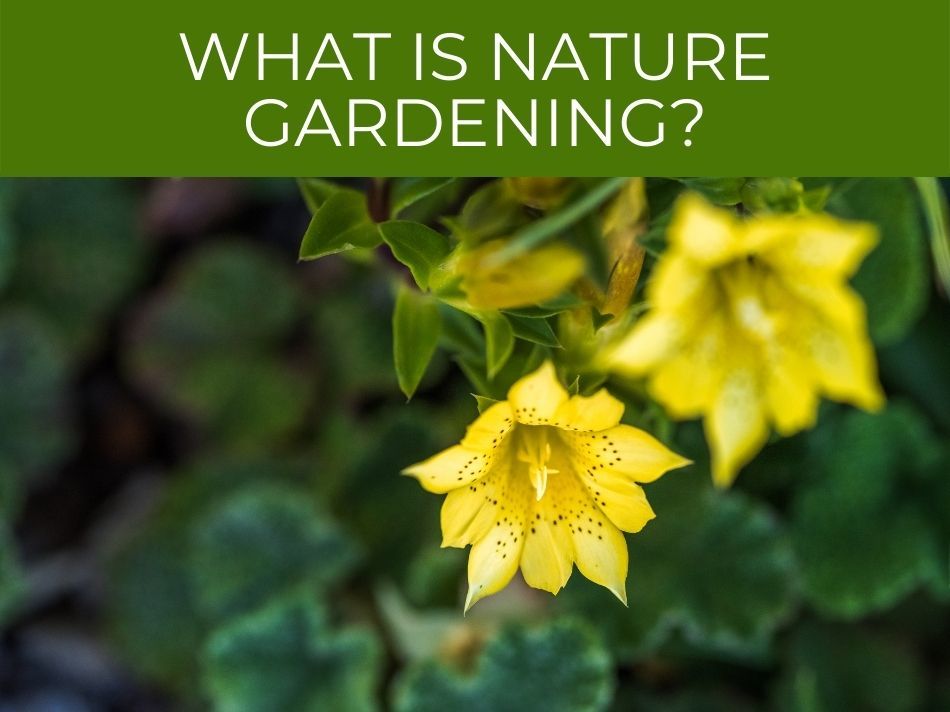
What is nature gardening?
Nature gardening is an approach to gardening that seeks to be in harmony with nature. On one hand, this means limiting or removing any negative impact on the environment. On the other hand, it also means having a positive effect on the environment. Through specific gardening practices, nature gardeners can actually improve the soil, restore habitats, and increase the biodiversity of their own backyards.
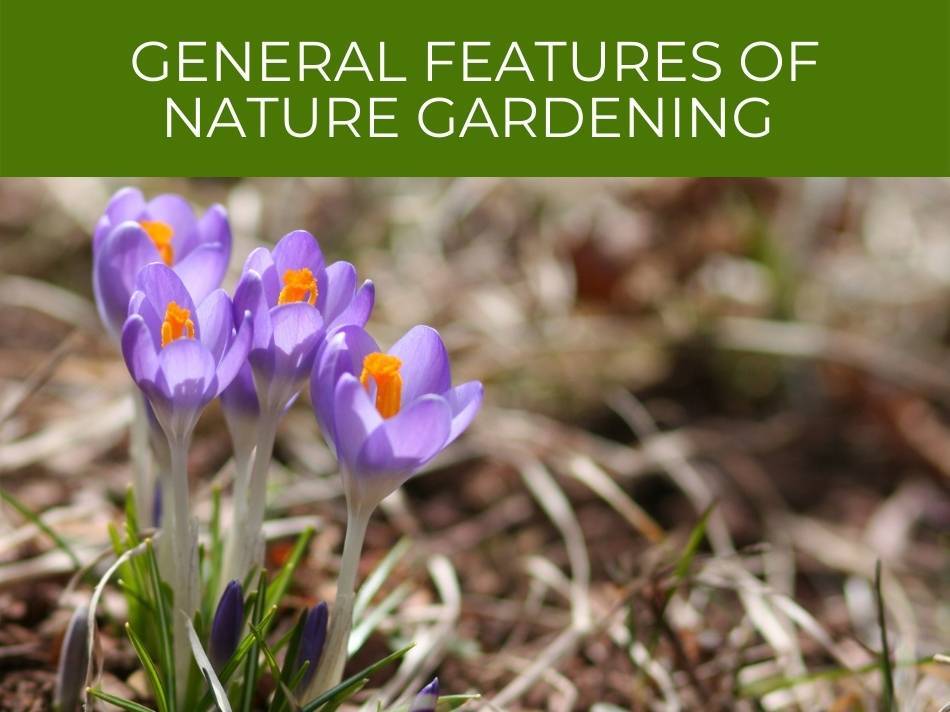
General features of nature gardening include:
Native species
Instead of planting species taken from other parts of the globe, nature gardeners prioritize species that are native to their specific region.
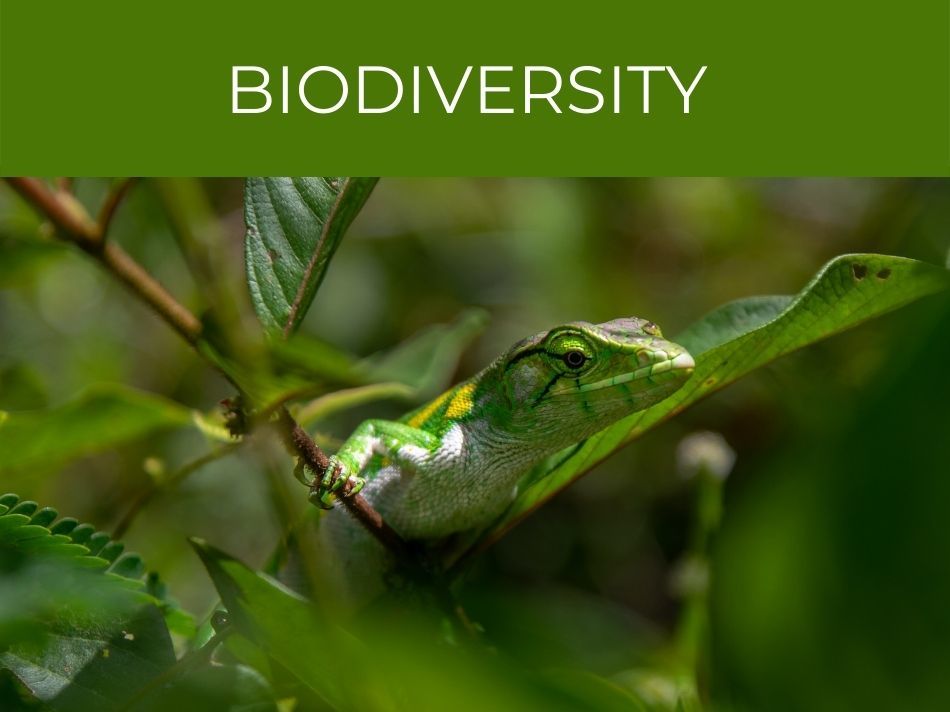
Biodiversity
In an effort to mimic nature, nature gardeners seek to increase the biodiversity of their outdoor spaces. Instead of planting just a few plants, or attracting just one or two insects, nature gardeners live by the motto, “The more, the merrier!”
Natural fertilizer
Some chemical fertilizers disrupt the balance of nature or harm the environment. Instead, gardeners can look to nature for fertilizing solutions that are environmentally friendly and effective.
Natural mulch
Mulch helps prevent soil erosion, retain water, reduce weeding, and moderate temperatures. Natural mulches, such as bark or leaves, get the job done and actually nourish the soil as they decompose.
Natural pest and weed control
Instead of using chemicals to deal with pests and weeds, nature gardeners once again look to nature for solutions. First, they reframe the question of what truly is a “pest” or “weed,” and what is simply a part of nature that can be tolerated. Sometimes they wait and see if nature will find a happy balance on its own. When a true problem is present, natural solutions–such as introducing “good” insects or using environmentally-safe washes–are used.
Conserving water
To minimize their negative impact on the environment, nature gardeners seek to conserve water whenever possible. Using rain barrels to collect water, spreading mulches to retain it, and planting native species are some examples of ways to conserve water.
Layout inspired by natural features
Instead of approaching an outdoor space as a “blank slate” to sketch their own dreams and plans upon, nature gardeners recognize the features that already exist in a space and work their plans around them. Nature gardeners might use plants that already exist in a yard, take into account natural runoff areas or dry areas, or manage the naturally sheltered areas.
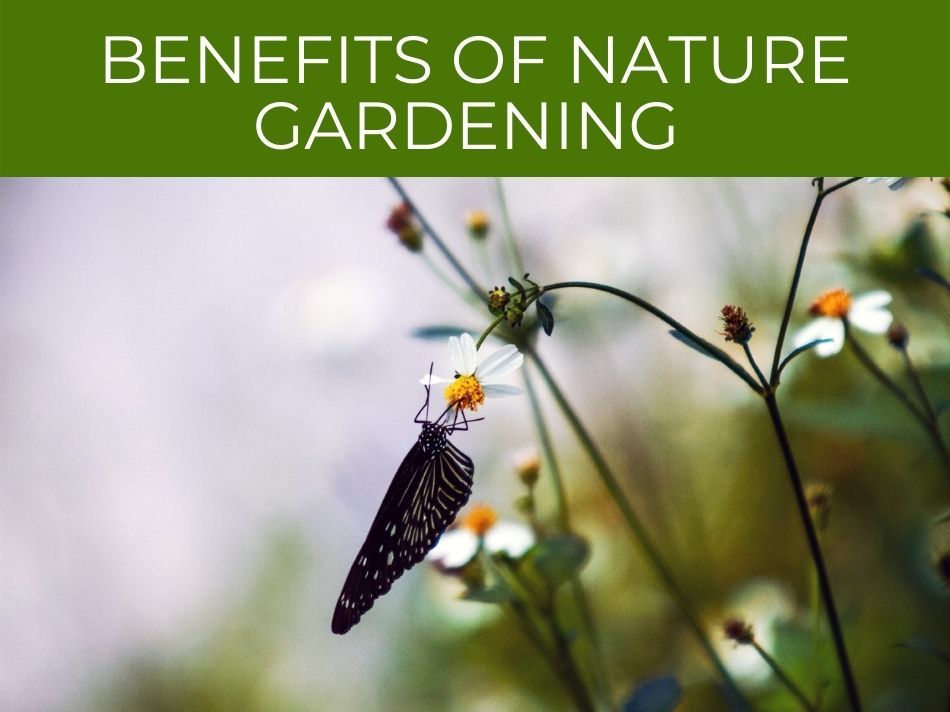
Benefits of nature gardening
Gardening with nature is increasing in popularity for many reasons. Part of that is gardeners’ interest in preserving nature and being environmentally friendly. But, honestly, part of it’s that there are just so many benefits to be found when you team up with Mother Nature.
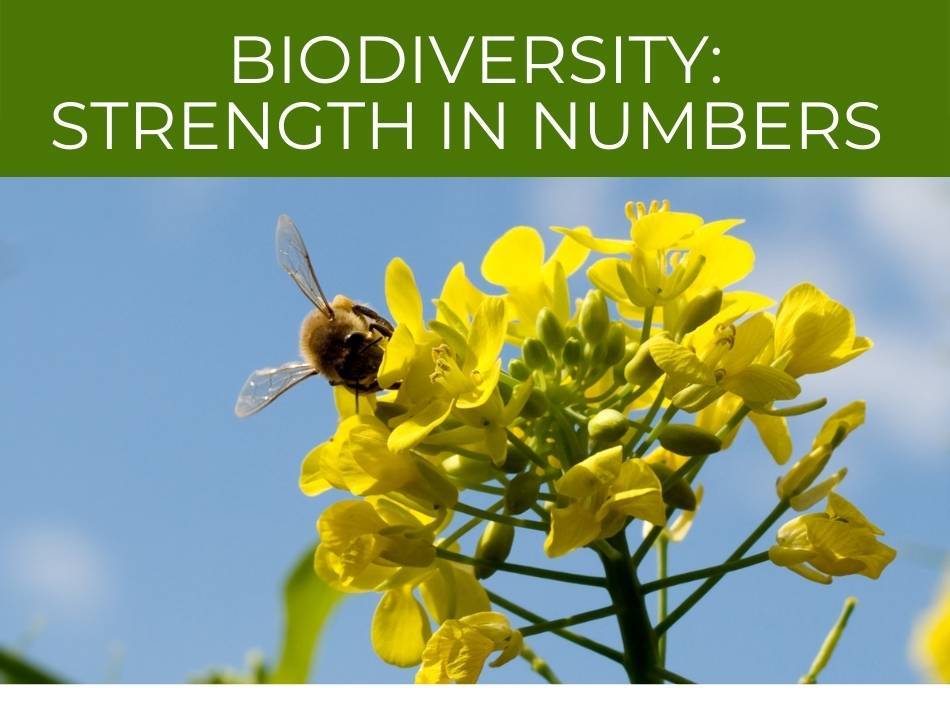
Biodiversity: strength in numbers
Imagine a stool with three legs. If one of those legs breaks, the stool is off kilter. Similarly, if an ecosystem has only a few different species, things are easily thrown off balance.
Biodiversity has the opposite effect. The more types of species you have in a garden–grasses, insects, plants, wildlife–the stronger the ecosystem. Predator and prey relationships balance. It’s harder for one single species to take over. Single pests can’t easily get to plague-like levels.
Soil health
Natural gardening practices don’t detract from the soil–they actually nourish it. Adding organic materials to the soil, or allowing existing materials to decompose, increases soil quality over time. Keeping soil covered–something Mother Nature almost always does–reduces soil erosion and increases fertility. Soil that is rich in organic matter attracts plenty of “good” creatures, like earthworms, that will labor alongside the gardener. Natural gardening also increases soil aeration, allowing tiny habitats to form with the right amount of air, water and nutrients needed.
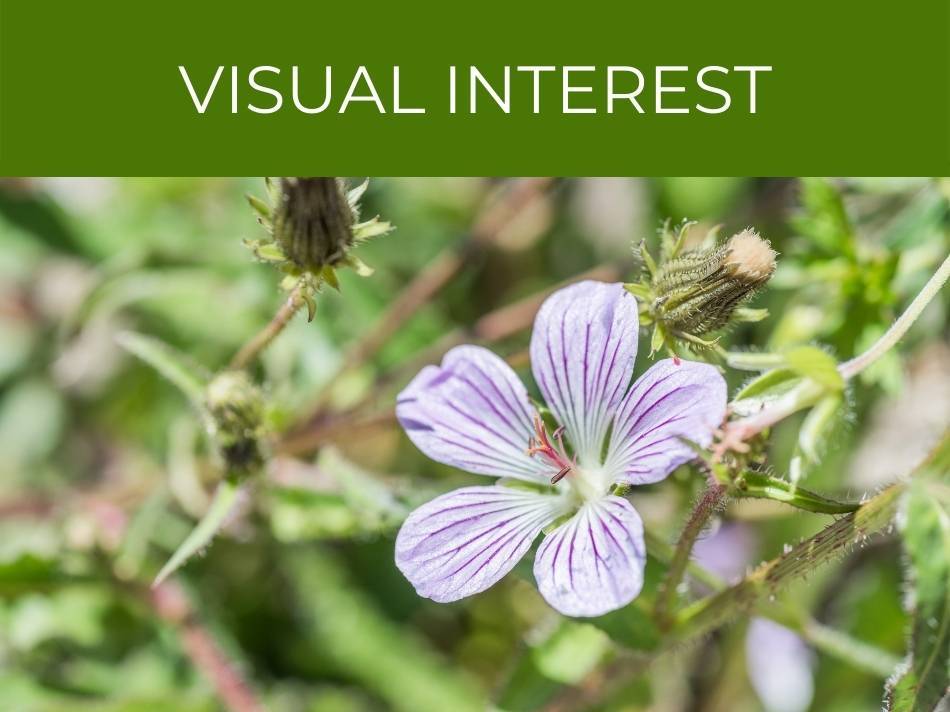
Visual interest
A naturally landscaped garden will be constantly changing, offering year-long diversity. The biodiversity, use of natural features, and attraction of insects and wildlife will make your yard a place of interest and curiosity. Much better than a flat, boring lawn.
Habitat restoration
We’ve all heard about the bees, and how we need to save them. We know that many birds, insects and wildlife are being slowly pushed out of their natural habitats. We know that this makes our world as a whole like that three-legged stool – more fragile, more disconnected from the many elements of nature we actually rely on.
Making your yard – even if it’s smack in the middle of a city, especially if it’s smack in the middle of a city – into a place that welcomes nature is an important way that you can restore natural habitats. The creatures will come, just wait and see.
Water savings
Natural gardening saves water in many ways. By using the existing features of a landscape, such as natural areas of run-off or drier areas, and planting accordingly, water is saved from the beginning. Planting native species will reduce the need for watering. Using natural mulches and increasing soil fertility will make your yard a water sponge. Instead of losing water to run-off, your yard will absorb it and retain it. Just the way that nature intended.
Less yard “waste”
A beautiful thing about nature gardening is that cycles begin to appear. The plant grows out of the fertile soil, then dies and returns to the soil. These cycles are loops, and in these loops, “waste” is often a vital step. Instead of bringing in chemical fertilizers and dumping out grass clippings, organic yard waste becomes the compost that will fertilize the soil.
Low maintenance
Since nature gardening is all about getting in harmony with nature, it’s lower maintenance than traditional gardening. When you have a nature garden versus a lawn, there’s less need for mowing, which means less air and noise pollution from the lawn mower.
Physical, mental and cognitive benefits
Nature gardening offers many benefits to the environment, but also to the gardeners themselves.
Nature gardening promotes a unique regional identity, through its preservation of native species. Nature gardening fosters community connections – instead of buying seeds from a company across the continent, nature gardeners might preserve and trade seeds and clippings with each other through seed libraries, online groups, and in-person meet-ups. In the pursuit of local, environmentally friendly fertilizers, nature gardeners might approach local farmers for manure, or the corner coffeeshop for used coffee grinds.
“Naturescapes” are particularly rich environments for children. There’s so much research demonstrating the powerful effect that nature has on developing brains and bodies. Nature gardening creates a patch of nature full of textures, sounds, sights and smells for children to explore. In a garden designed to attract nature, children learn about native species and cycles. Children have a space to create tunnels and forts, examine spider webs, or listen to songbirds.
For the gardener, nature gardening promotes cognitive development as it requires constant learning and adaptation. The gardener is not the master of a square patch of dirt – the gardener is working with and learning from the natural elements in his or her space. Nature-rich environments are a natural stress reliever, and nature gardening can become a source of joy and wonder. Instead of managing everything on your own timetable, a garden that is aligned with nature can present surprises and gifts.
Some nature gardeners report that, by making their yard a beautiful space that is rich in diversity and curiosity, their previously gnawing sense of “wanderlust” has been dampened. Instead of itching to go somewhere else or see something new, they have found a deeper connection and contentment in their own backyard.
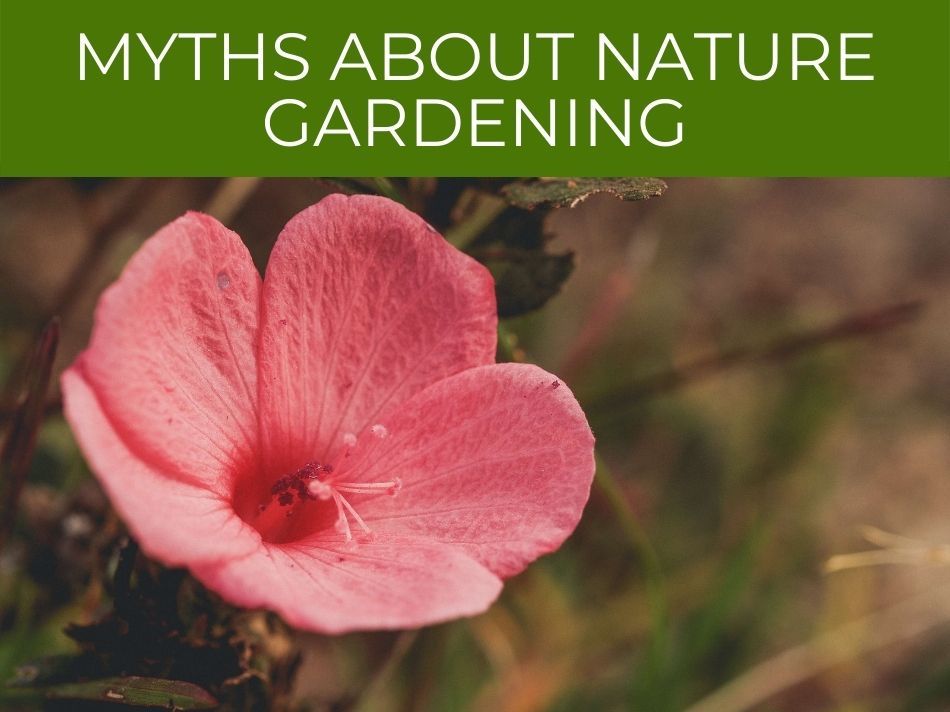
Myths about nature gardening
Gardening with nature can be unfamiliar territory for many gardeners. It’s hard to shift out of the mainstream perspective, reframing traditional gardening wisdom. The fear of the unknown is often bolstered by the myths that exist around nature gardening.
Myth: nature gardening attracts pests
Snakes, rats, and mosquitoes, oh my!
Any of those – and especially all three in one sentence – might be enough to turn someone off of the idea of nature gardening. Add in ticks, too, and it’s a done deal. But, are those myths true?
Rats
The reality is that rats are more attracted to human foods – corn in a barn, garbage in a dumpster, or litter in a ditch – than they are attracted to seeds of native grasses and wildflowers. If rats become a problem, take the time to figure out what exactly is attracting them. It’s not your long grass.
Snakes
Snakes, on the other hand, can be attracted to a naturally landscaped yard if all of their needs are met there. The pros and cons of this depends on your region and the types of snakes you have around. For many areas of the US and Canada, most snakes are harmless and are in fact a gardener’s friend, as they eat true pests such as mice, slugs, or harmful insects. If you’re nervous of snakes, keep walkways and footpaths clear of long grasses; you could also remove potential snake shelters, such as rock walls or log piles.
Mosquitoes
What about mosquitoes? Is a naturally landscaped yard going to become a buzzing breeding ground for those little bloodsuckers?
Mosquitoes breed in standing water. A natural garden, with rich soil, natural mulches, and many native species, is actually more capable of soaking up heavy rainfall than a traditional garden. A lawn is even more likely to create puddles. If you have a pond, you can add mosquito-eating fish or create a waterfall to keep the water moving. A huge bonus to the natural garden is, once again, biodiversity. Mosquito predators, like birds and dragonflies and bats, will be drawn to your garden and they’ll help you keep the mosquito population down.
Ticks
The fear of ticks is another concern many gardeners express. Deer ticks are the primary vehicles for the spread of Lyme disease, a serious disease that is spreading further north every year. Ticks often hang onto tall grasses, waiting for some warm-blooded mammal to walk by. If ticks are a concern in your region, reduce the risk by keeping walkways clear of long grasses, ensuring that borders are thick enough to prevent your legs from being brushed by grass or flowers.
Myth: nature gardening attracts allergenic plants
Most allergic responses to plants are caused by wind-borne pollens. These are the pollens that can be released by certain types of trees, or often non-native plants that thrive in disturbed soil. The native grasses and wildflowers cultivated in a natural garden, however, are almost always pollinated by insects.
Myth: nature gardening is a fire hazard
I’ll be honest – I did not think of this as a potential objection to nature gardening. But apparently it’s a concern some people have.
The idea is that tall grasses and wildflowers – typical of a natural meadow – are highly flammable. But, according to an article by Pennsylvania State University, grasses can only sustain a fire with high heat for about 20 seconds. If a fire was to damage a house, it would have to burn for at least 7 minutes.
Myth: nature gardens just look messy
Do a quick search on Google images and you’ll quickly figure out that this is not true. You’ll find curving pathways, wooden and stone borders, gentle hills, arching tree branches, and garden beds overflowing with color. Well-placed human elements – a bench nestled among shrubs, or wind-chimes tinkling from a tree branch – can make your yard just as attractive to people as it’s to nature.
If you really begin to dig, checking out the work of natural landscape designers and bloggers, you’ll find that there’s an endless world of creative ideas to explore. Tunnels of woven willow, walls of sunflowers, or planters made of rotting logs and stumps are just a few of the brilliant ways natural gardeners have beautified their spaces. It’s downright enchanting.
Instead of being the eyesore of the neighborhood, a well-designed natural landscape can actually increase the market value of a home or property.
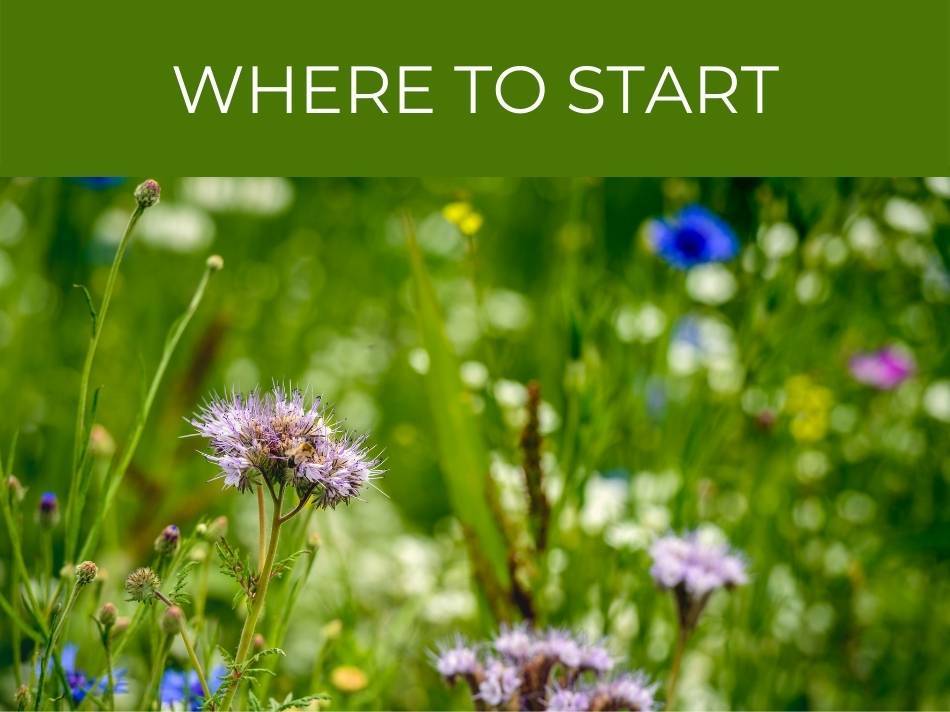
Where to start
Okay, okay. After that list of benefits, and after we demolished those silly myths, you’re sold on the idea. Where to begin?
Observe
Step one: observe. Remember, your yard is not just a blank slate. You can’t just steal some random blogger’s yard design and apply it to your space. You need to observe what you’re working with. What plants and animals already frequent your yard? What features do you have – hills, shelters, sun and shade? What areas of your yard are naturally wet, what areas are naturally drier? What area would be the best place for your kids to play in the afternoon, or for you to enjoy your morning coffee? Which area of the yard provides the best sun? Where would the best spot be for your water-loving plants?
What type of soil are you working with?
This feels like an extra step in the beginning, but it will pay off in dividends. Instead of battling against nature, you’ll be working with it.
After you’ve observed and know what you’re working with, plan a layout that works with the existing natural features. When you’re planning your layout, consider adding curves. Instead of rigid lines, curves are attractive to the eye and evoke a gentle, relaxing feel. Consider which human elements you want, and where the best places for them would be. This is a place for nature, but also a place for you to enjoy as well.
While you might have an entire layout in mind that you’re going to work toward, you can start small. Just turn one garden bed into a wildflower garden this season. Just try adding a few more natural species. Focus on your front yard, perhaps, and work on your backyard next year. If you’re already working with a traditional yard or garden space, changing it all at once might be too overwhelming.
Before choosing your plants, go back to those observations you made. Which plants would be best suited to the specific features of your yard and garden?
Where possible, choose native species. These plants are probably already best-suited to your garden, as they are local to your area. In the long run, they will be lower maintenance as they are already accustomed to your climate and typically withstand local pests. Choosing native species will also ensure that you’re not choosing invasive species – species that aggressively push out native ones. Native species will also attract the nature you want – the insects and birds and wildlife in the region.
Does this plant attract pollinators?
Which plants in the nursery do you see attracting bees, butterflies and hummingbirds? That’s a good sign! Many flowers available at large nurseries are attractive to people, but don’t have the pollen or nectar useful for nature.
Does this plant attract birds?
Will it provide shelter for birds in the winter, or berries for birds to eat? Research the wildflowers in your region that will attract songbirds, or the specific plants and trees that will provide nesting habitat for your local feathered friends.
Does this plant attract insects?
You might not set out thinking about creating a home for bugs but remember: good bugs eat the bad bugs. Biodiversity leads to a strong, steady ecosystem – you will be less likely to watch one entire species be wiped out if you cultivate biodiversity at all levels.
Does this plant attract wildlife?
And, second question, which type? You might not want to be too attractive for some wildlife – researching the types of plants deer are less likely to munch on, for example – while you might target others. Besides the plants themselves, other elements, such as rotting logs or brush piles, might also be ways you can make your space more hospitable to wildlife, from salamanders to squirrels.
How does this plant interact with other plants?
Check out which native plants tend to grow in clusters in nature. Try to mimic the varieties you observe. Mother Nature doesn’t grow plants alone; instead, she offers a bouquet.
When you’ve chosen the types of plants you want, you need to figure out where to get them. In some cases, you can simply head out into nature and transplant some wild species. I live in an area surrounded by bush, and my husband and I have transplanted species such as dogwood, Black-eyed Susans, and milkweed into our own yard. Check in with your local gardening community to see about potential plant swaps or existing seed libraries. When shopping at a greenhouse or nursery, ask about plants sourced from your area.
In some cases, such as in growing vegetable gardens, you will be using non-native plant species. In this case, try to select heirloom species – that is, seeds that have been produced using open-pollination techniques. Keep your non-native species separate from your native species.
While all of this planning and selecting and goal-making is great, you also need to flexible. Write your plans in pencil, as my dad always says. As your garden develops season after season, some native species will appear in places you didn’t necessarily plan for them. That’s what happens when you’ve got a moving, vibrant ecosystem. Depending on your perspective, this can be a frustration or a joy. In many cases, these developments can be embraced as positive surprises.
Maintenance
Natural gardening techniques can often go against the grain of traditional gardening wisdom. Here are some maintenance tips for a natural garden:
Reduce digging
Tilling and digging are accepted as standard gardening practices. However, digging can often disrupt the ecosystems beneath the soil – the roots, the worms, the fungi and the insects. In some cases, disturbing the soil can also dig up weed seeds and encourage them to germinate. While your vegetable patch might benefit from digging, your natural garden generally prefers to be left alone.
Reduce cutting
In the fall, there’s no need to strip your garden. Just trim what is necessary, such as plants that block a path. Otherwise, let the dead plants and leaves cover your soil, decompose into nutrients, and shelter wildlife.
Weeding
In some cases, you might need to redefine the word “weed.” Some plants that are labelled as weeds are actually beneficial to birds and insects. Some plants labelled as weeds might be helpful cover crops to nourish your soil.
When weeding is needed, try to remove the plants before they mature and spread seeds. Remove the entire plant, roots and all, and put it in your compost. If seeds have developed, put the plant in a paper bag and remove it in the compostable garbage bin, if that service is offered by your municipality.
Be aware of invasive species in your area. These plants are to be despised and removed, as they will take over natural species and weaken the biodiversity of your garden.
No need to feed
Generally, native species of grasses and wildflowers don’t need to be fertilized. They’re made for your exact region, after all!
Compost
Compost is an excellent way to use up yard “waste,” and to enrich your soil naturally. While native species often don’t require any feeding at all, as I mentioned, you can add compost to help boost fruit trees, container soil, newly planted shrubs, or your vegetable garden.
Mow your meadow
Generally, natural gardening removes the need for any mowing. However, a once-a-year mowing of wildflower meadows can encourage growth. This is generally done after seed-set, but you should research the best time of year and mowing practices for the species in your area.
Troubleshooting
The good news is that gardening with nature generally means that there are less potential problems to fret about. If the plants you’re growing are native to your area, they are likely resistant to local diseases and pests. They are also well-suited to your climate and soil. Growing milkweed or fleabane in Minnesota, for instance, is going to be a lot easier than creating the perfect environment for orchids.
Invasive Species
One potential problem to be aware of is the problem of invasive species. These species are just as they sound – invasive. They are not native to the area, and native species lack the defenses needed to control them. Invasive species can strangle a nature garden. Research the invasive species in your area. If you spot any of the top suspects in your yard, remove them thoroughly. Uproot the entire plant and, if the plant has gone to seed, dispose of it carefully to prevent spreading it in your area.
Pests
While nature gardens are not generally susceptible to local pests, pests can still become a problem depending on what you’re growing. Or perhaps you’re growing a vegetable garden, but don’t want to use chemicals to combat slugs, snails or other pests. Using insecticides or other chemicals can damage the environment and prompt the very creatures you’re trying to attract – birds, butterflies, and other wildlife – to boycott your yard.
There are plenty of nature-friendly options for dealing with slugs, snails, or other pests. You might use beer traps, organic slug pellets, or good old-fashioned picking them off by hand. In some cases, you might just wait it out and see how nature rebalances itself. Certain plants such as Lupines attract slugs and snails, so if those are a concern you might want to reconsider growing them in the first place. (Full disclosure: we have Lupines in our front garden. They are lovely and, to us, worth the risk. So far, so good!)
Other potential problems have already been covered in the discussion of nature garden myths. As I mentioned there, if snakes or ticks are a concern, ensure that all walkways and areas of human use are clear of long grass.
What about the neighbors?
Hm … The potential human problems. Those can be trickier.
Many a potential nature gardener has stopped their plans at the dreaming stage because of municipal weed laws, or concern over what the neighbors might think. As my husband and I dream about expanding our nature garden to overtake our entire front lawn, we pause to consider the impact on our neighbors. We love nature gardening, but we want to move forward in a way that is respectful to those around us as well.
First, remember that the idea of nature gardens as messy is a myth. A nature garden can be aesthetically appealing and welcoming. A well-designed naturescape can actually increase property values.
Weed Laws
Before beginning your project, check your area for “weed laws.” If any laws exist that stand in the way of your plans, either adjust your plans or challenge the laws. Respectfully inform decision-makers of the many benefits nature gardening offers.
If there are no weed laws to worry about, get going! If you’re working on an area visible to neighbors – such as your front lawn – planning an attractive layout will help get them on your side and, possibly, to spread the nature gardening movement. Use clear borders such as rocks, fences, gates, or logs. As the saying goes – “Good fences make good neighbors.”
Educate
If you want to educate people about what you’re doing with your yard, consider displaying a sign or plaque. These can range from an informational tone to a playful one.
You might also want to pursue certification and display this certificate as your sign. Certification allows you to share your ideas with others and learn more about nature gardening standards. In Canada, the Canadian Wildlife Federation can certify your outdoor space as a Wildlife-Friendly Habitat. Their interactive map shows photos of certified yards, creating a collection of ideas specific to each region. In the United States, the National Wildlife Federation can certify your yard as a Certified Wildlife Habitat. By applying to be certified, you support the work of the National Wildlife Federation and can obtain a Certified Wildlife Habitat sign to display.
Finally, when it comes to nature gardening around neighbors, remember to dish out the same attitude you wish to receive. If you have a flowing meadow in front of your house, don’t judge your neighbor’s meticulous green lawn.
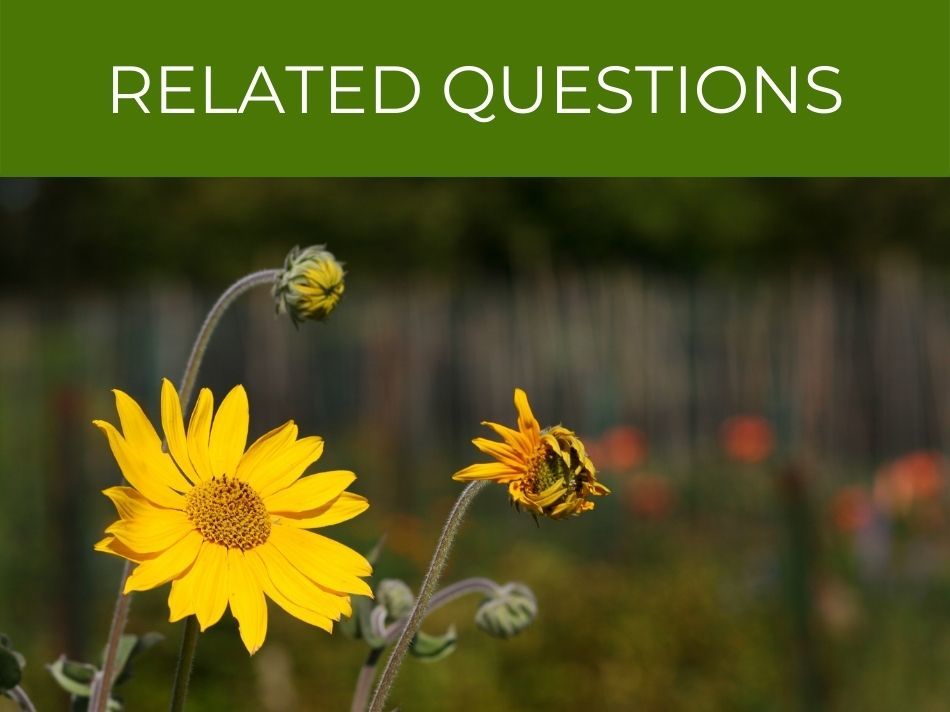
Related questions
How can I make my garden nature friendly?
You can make your garden more nature-friendly through the following: providing food, water and shelter to various wildlife; planting native species; and using environmentally friendly methods of fertilization and pest control.
What is a natural garden?
A natural garden is a garden that is in harmony with nature. A natural garden mimics nature in its biodiversity and local species. A natural garden nourishes the soil and enriches the local ecosystem. A natural garden does not harm the environment; chemicals are not used, and water conservation is practiced.
How do you convert a yard to a wildlife habitat?
You can convert your yard into a wildlife habitat by providing food, water, shelter and places to raise young. To keep your yard wildlife-friendly, you also need to manage it with sustainable practices: avoiding chemicals, managing invasive species, and conserving water and soil. These are the guidelines set out by the National Wildlife Federation. You can read more, and certify your yard as a wildlife habitat, here: https://www.nwf.org/garden-for-wildlife/certify.
Well, there you have it. A brief introduction into the world of nature gardening. Hopefully you’re dreaming up plans for your yard and are ready to work with Mother Nature to get there.


